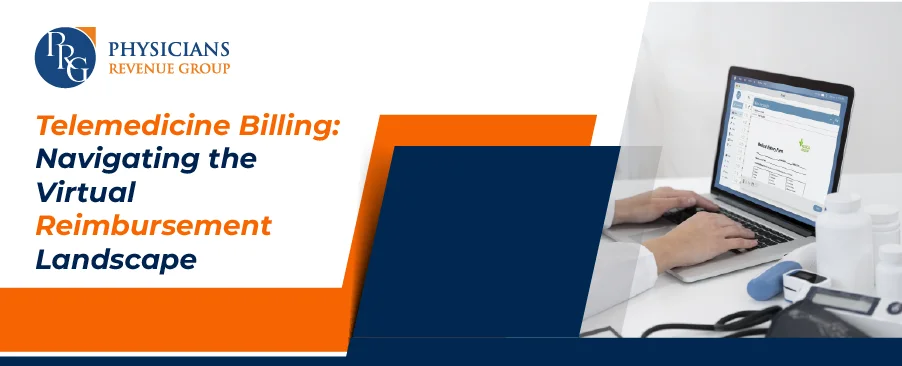
Email: info@prgmd.com | Call: +1 (630) 242-6474
Business hours: 9:00 to 5:00 | Monday to Friday
Email: info@prgmd.com | Call: +1 (630) 242-6474
Business hours: 9:00 to 5:00 | Monday to Friday

Table of Contents
ToggleToday, technology has transformed the healthcare and value-based reimbursement landscape. Moreover, telemedicine has established itself as a groundbreaking solution bridging the gap between healthcare providers and patients. Thus, by proxy, the adaptation of telemedicine services has made telemedicine billing an integral part of the healthcare revenue cycle management. One of the easiest and most efficient ways to stay on top of telemedicine reimbursement is to outsource medical billing services to a billing provider – more on that later.
Value-Based Reimbursement (VBR) is gaining importance as the healthcare landscape grows. In this payment model, reimbursement is tied to the quality and outcome of care rather than the quantity of services. Telemedicine has a significant role in VBR, as it allows for continuous monitoring and follow-up care, improving patient outcomes.
Transitioning to VBR requires a comprehensive understanding of the reimbursements in healthcare. Outsourcing medical billing services can aid in adapting to this model by ensuring accurate documentation of outcomes and aligning the billing process with quality care delivery.
Telemedicine Billing is a vital aspect of modern healthcare, and its importance is expected to grow in the coming years. As the healthcare industry adapts to technological advancements and value-based care, healthcare providers must navigate the virtual reimbursement landscape efficiently.
Outsourcing medical billing services is a strategic move to enhance billing efficiency and financial stability. By leveraging the expertise of third-party healthcare billing companies, healthcare providers can streamline their billing processes, adapt to VBR models, and maximize their reimbursement rates.
These include:
It is important to note that all 6 of these sections have subdivisions corresponding to the type of procedures, part of the body, and what that particular procedure relates to.
Share:
Categories
Recently Added

What is an ABN in medical billing?

What does a Clearinghouse do During Claims Submission?

What is EOR in Medical Billing?
We Would Love to Assist You!
We treat your data confidentially and don’t share any information with a third party.